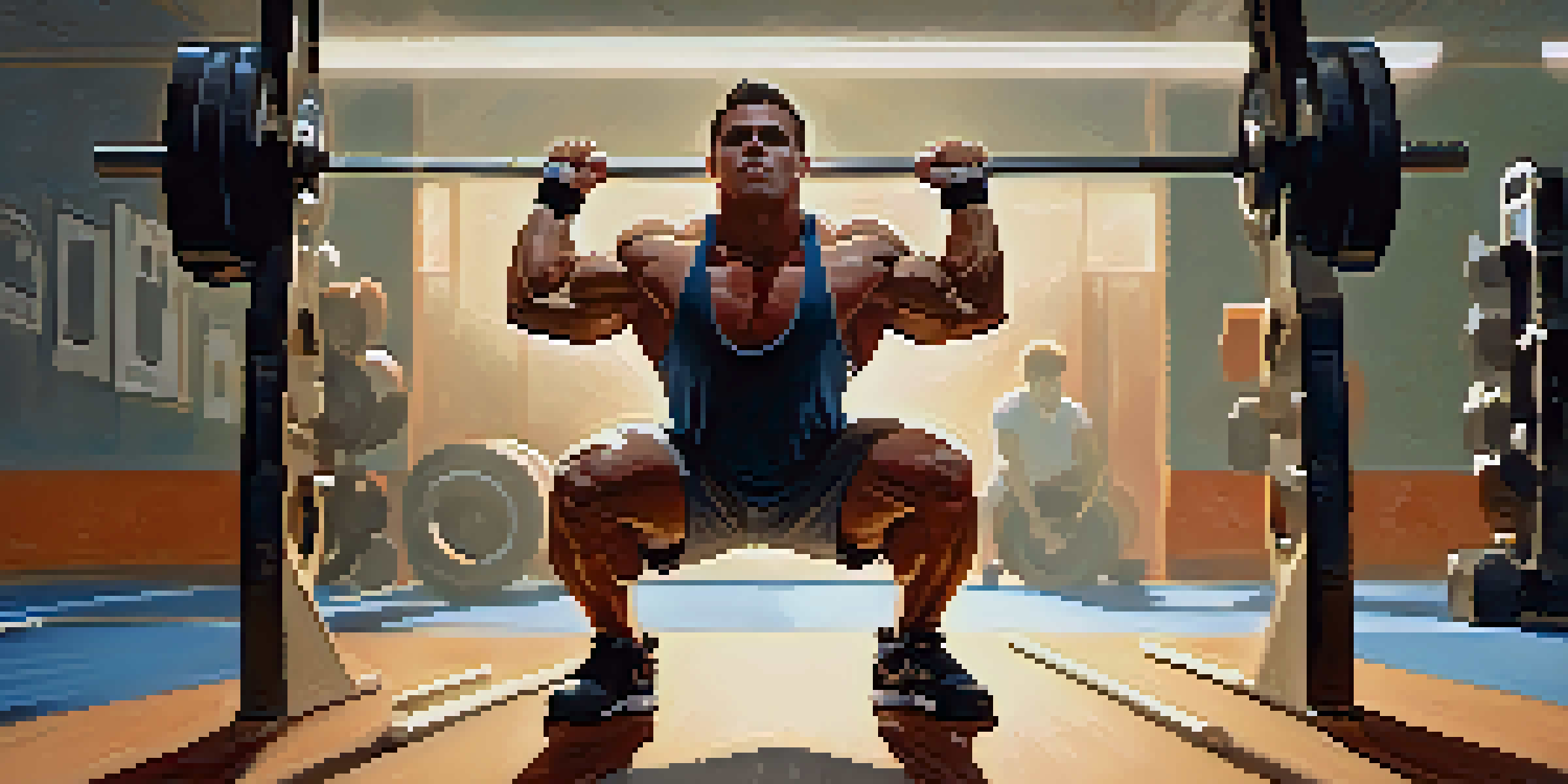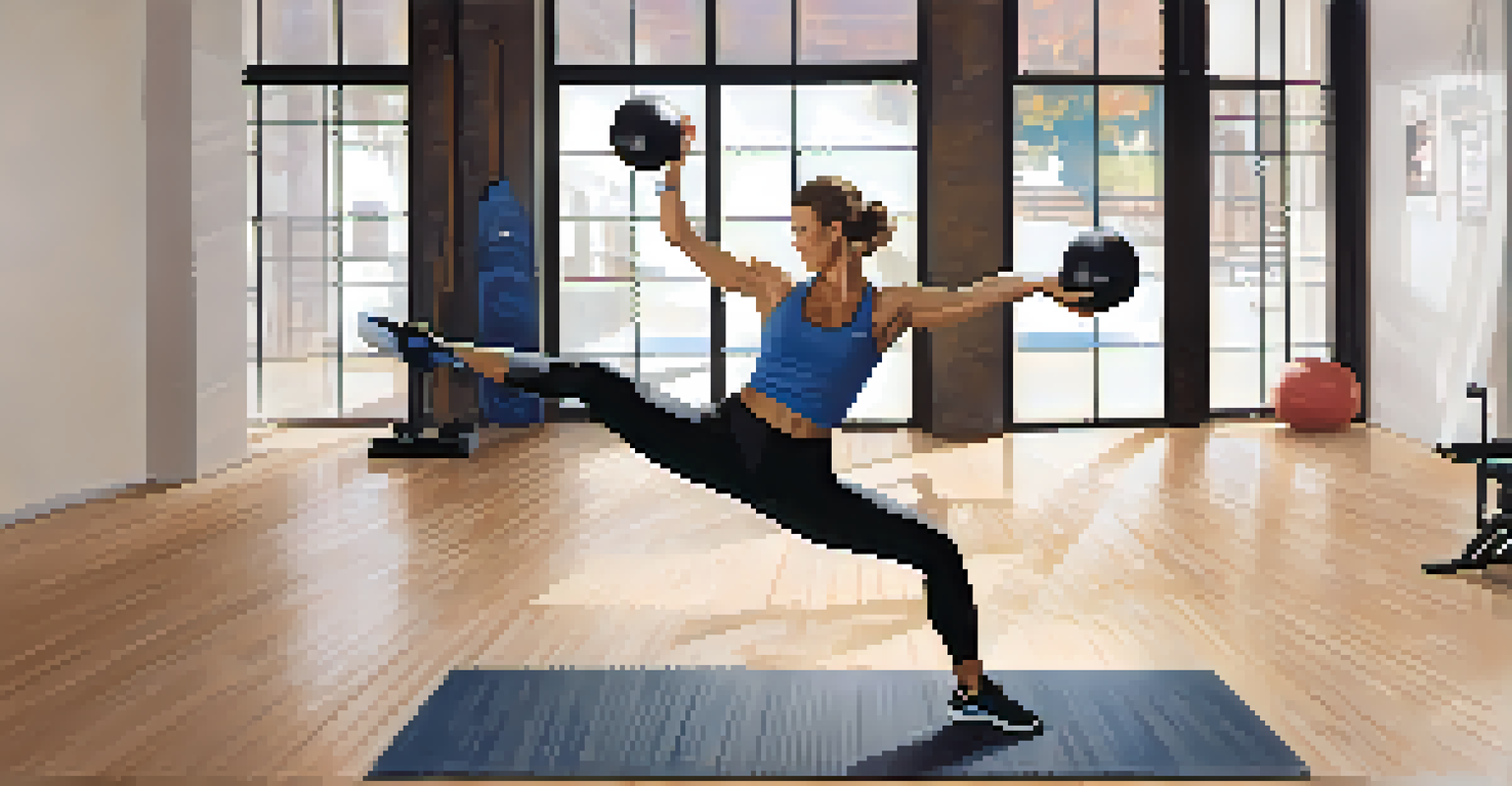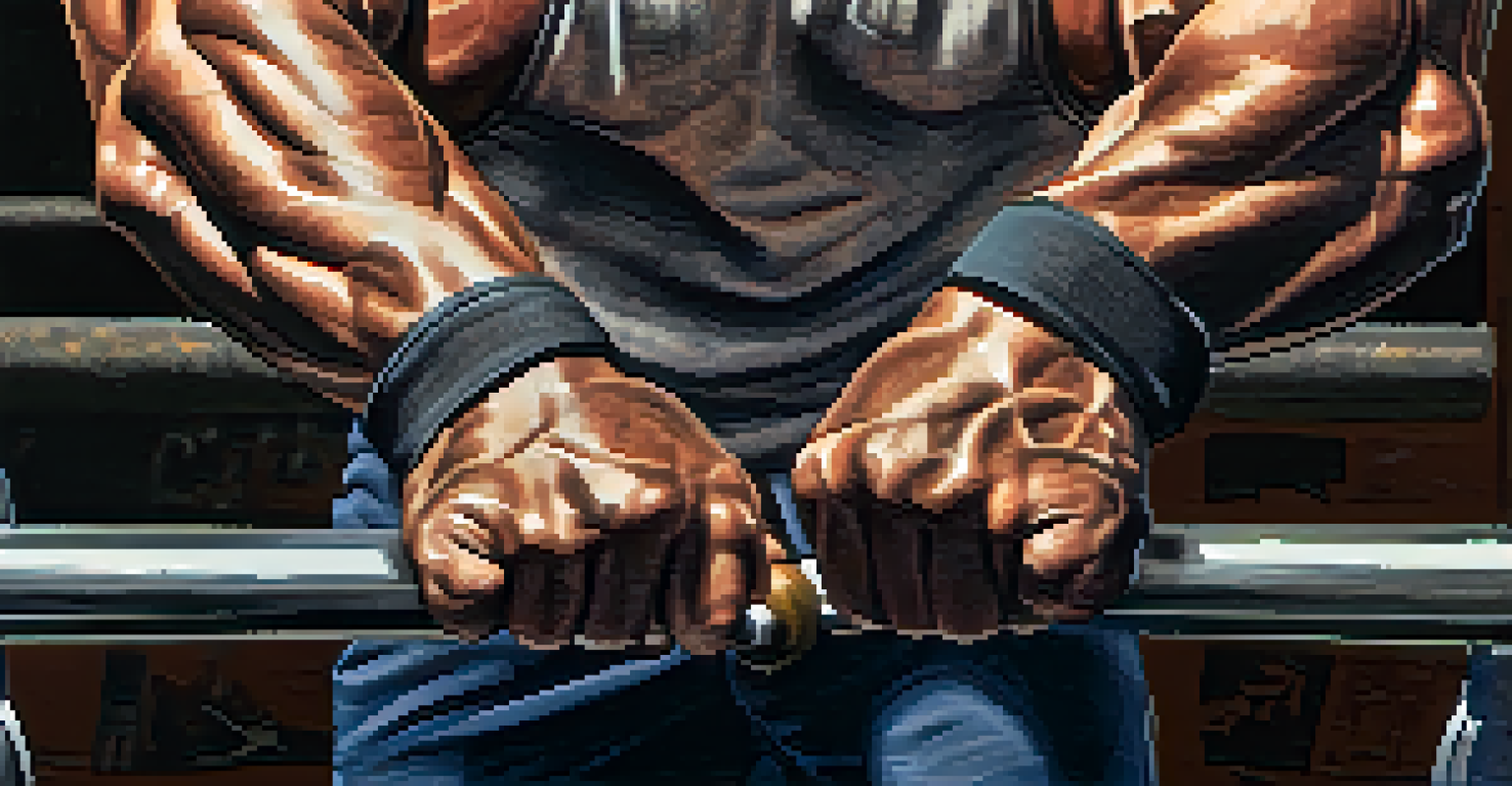Functional Movement Patterns: The Powerlifting Connection

Understanding Functional Movement Patterns in Lifting
Functional movement patterns refer to the basic movements our bodies perform daily, like squatting, hinging, and pushing. In powerlifting, these patterns are crucial as they help lifters maximize their strength and efficiency. By understanding these movements, athletes can improve not only their lifting techniques but also their overall physical performance.
The greatest wealth is health.
For instance, the squat is a fundamental functional movement that mimics sitting down and standing up, making it highly relevant to everyday activities. Powerlifters who master this movement can better transfer their strength to the squat competition lift. By focusing on functional patterns, lifters can reduce the risk of injury and enhance their training outcomes.
Ultimately, integrating functional movement patterns into training helps athletes develop a strong foundation. This foundation is essential for building more complex movements and achieving personal bests in powerlifting competitions. It's all about ensuring that each lift is not just about weight but about the quality of movement.
The Importance of Squat Patterns in Powerlifting
The squat is one of the three main lifts in powerlifting, and it’s also a prime example of a functional movement pattern. This exercise requires strength, balance, and flexibility, which are key to executing a successful lift. When lifters perform squats correctly, they engage multiple muscle groups, making it a powerful full-body workout.

Moreover, mastering the squat can significantly improve a lifter's performance across all lifts. For instance, a stronger squat can lead to better deadlifts due to the enhanced leg strength and stability. Therefore, powerlifters should prioritize squatting in their training routines, focusing on form and technique to ensure they're reaping the full benefits.
Functional Movements Enhance Lifts
Understanding and integrating functional movement patterns like squats, hinges, and pushes can significantly improve lifting efficiency and performance.
Incorporating variations of the squat, such as front squats or box squats, can help develop different aspects of the movement. These variations challenge the body in unique ways, promoting overall strength and resilience. The key takeaway is that the squat is not just a lift; it's a vital component of functional fitness.
Hinge Patterns: Their Role in Deadlifting Success
The hinge movement is essential for deadlifting, another foundational lift in powerlifting. This pattern mimics actions like bending at the hips to pick something up off the floor, making it a highly functional movement. When lifters perfect their hinge technique, they set themselves up for success in the deadlift, minimizing the risk of injury.
Strength does not come from physical capacity. It comes from an indomitable will.
A common mistake among lifters is to rely too heavily on their back instead of engaging their hips during a deadlift. This incorrect form can lead to strain and potential injuries. By focusing on the hinge pattern, athletes can learn to keep their back straight and hinge at the hips, utilizing their leg strength effectively.
Practicing hinge movements through exercises like kettlebell swings or Romanian deadlifts can reinforce proper technique. These exercises not only build strength but also improve body awareness and coordination. Ultimately, mastering the hinge pattern is crucial for anyone looking to excel in powerlifting.
Push Patterns: Enhancing the Bench Press Technique
The bench press, the third pillar of powerlifting, relies heavily on push patterns. This functional movement translates to everyday activities like pushing doors or lifting items overhead. Understanding the mechanics of pushing can help powerlifters develop a more effective and efficient bench press.
When lifters focus on push patterns, they learn to engage their chest, shoulders, and triceps effectively. This engagement is key to maximizing strength and power during the bench press. Additionally, a solid push pattern can enhance stability on the bench, allowing for safer lifting.
Core Stability is Crucial
A strong core supports proper technique and power generation in all major lifts, reducing the risk of injury and enhancing overall strength.
Incorporating exercises like push-ups or overhead presses can build the foundation needed for a strong bench press. These movements reinforce the principles of pushing and can help identify weaknesses in technique. By integrating push patterns into their training, lifters can achieve better results in their bench press performance.
The Role of Core Stability in Functional Movements
A strong core is essential for all functional movement patterns, especially in powerlifting. The core acts as a stabilizer, allowing lifters to maintain proper form during squats, deadlifts, and bench presses. Without core stability, athletes risk compromising their technique and increasing the chance of injury.
For example, during a heavy squat, a weak core can lead to forward leaning, which affects balance and power output. By strengthening the core through targeted exercises like planks or medicine ball twists, lifters can improve their performance across all lifts. A stable core allows athletes to generate more force and maintain better control.
Thus, core training should be integrated into every powerlifting routine, as it supports the execution of functional movement patterns. Lifters should view core exercises not as an additional task but as an integral part of their strength training. A well-developed core is the backbone of successful lifting.
Mobility and Flexibility: Their Impact on Lifting Performance
Mobility and flexibility are critical components of functional movement patterns, influencing a lifter’s performance. Good mobility allows for a greater range of motion, which is essential for executing lifts with proper technique. For instance, tight hips can limit squat depth, reducing effectiveness and increasing injury risk.
Incorporating mobility drills into training routines can enhance flexibility and prepare the body for lifting. Simple stretches and dynamic movements can help improve joint health and muscle elasticity, which are vital for lifting heavy weights. A well-rounded approach to mobility can lead to better performance and longevity in the sport.
Mobility Boosts Lifting Performance
Prioritizing mobility and flexibility exercises helps powerlifters achieve better range of motion and reduces the likelihood of injuries during lifts.
Powerlifters should prioritize mobility work as part of their overall training regimen. Not only does it aid in performance, but it also enhances recovery and reduces soreness. Ultimately, a focus on mobility and flexibility can significantly impact a lifter's success in powerlifting.
Integrating Functional Movement Patterns into Training
Integrating functional movement patterns into powerlifting training can create a more holistic approach to strength development. By prioritizing foundational movements, lifters can enhance their performance in the three main lifts. This integration fosters a deeper understanding of how movements relate to one another, improving overall lifting efficiency.
For example, a training program that incorporates squats, deadlifts, and bench presses alongside functional movements like lunges and push-ups can lead to well-rounded strength. This diverse approach helps lifters overcome plateaus and develop a more resilient physique. Additionally, it keeps training engaging and fresh.

Ultimately, the key is to personalize training programs to include both foundational lifts and functional patterns. Lifters should continuously assess their progress and adjust their routines to meet individual needs. By embracing functional movement patterns, powerlifters can achieve greater success in their lifting journey.